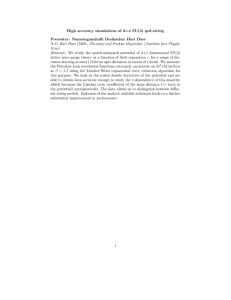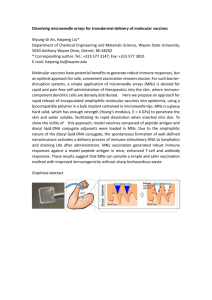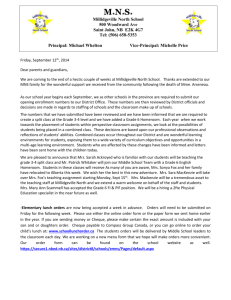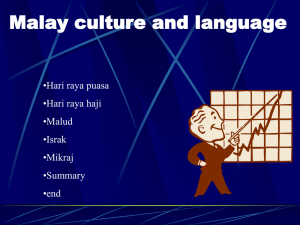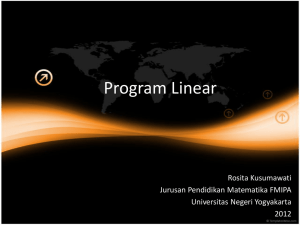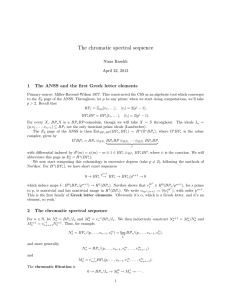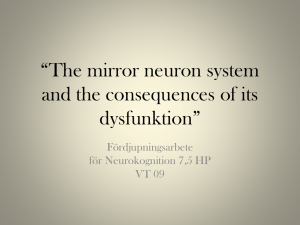BRAIN BASIS OF SOCIAL INTERACTION
advertisement
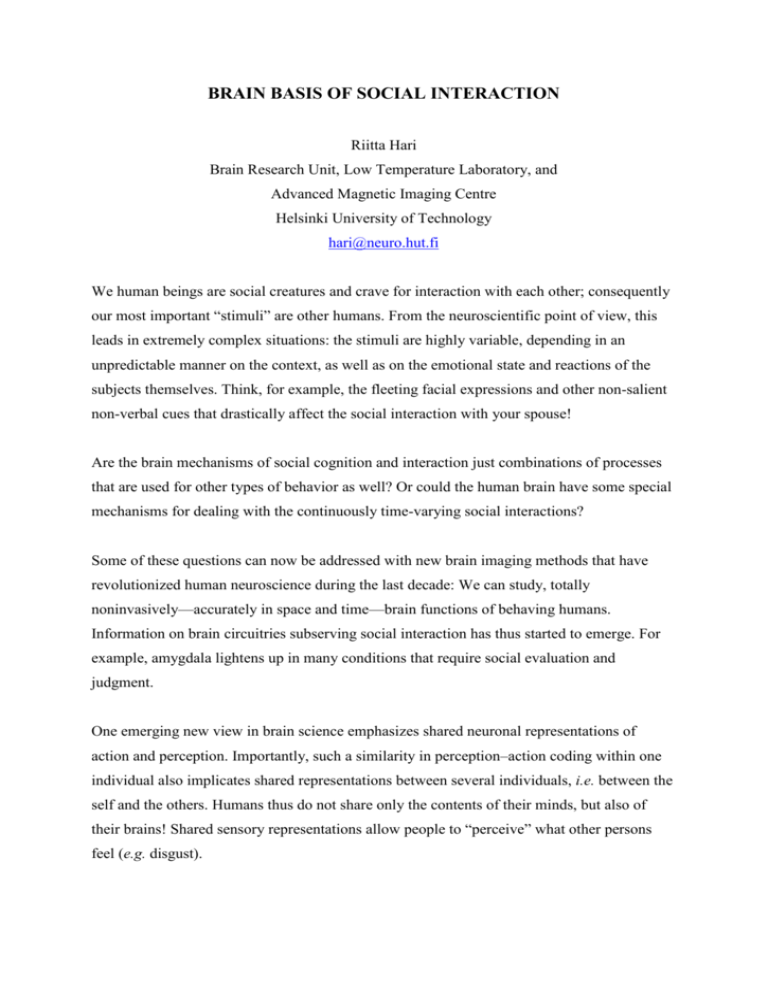
BRAIN BASIS OF SOCIAL INTERACTION Riitta Hari Brain Research Unit, Low Temperature Laboratory, and Advanced Magnetic Imaging Centre Helsinki University of Technology hari@neuro.hut.fi We human beings are social creatures and crave for interaction with each other; consequently our most important “stimuli” are other humans. From the neuroscientific point of view, this leads in extremely complex situations: the stimuli are highly variable, depending in an unpredictable manner on the context, as well as on the emotional state and reactions of the subjects themselves. Think, for example, the fleeting facial expressions and other non-salient non-verbal cues that drastically affect the social interaction with your spouse! Are the brain mechanisms of social cognition and interaction just combinations of processes that are used for other types of behavior as well? Or could the human brain have some special mechanisms for dealing with the continuously time-varying social interactions? Some of these questions can now be addressed with new brain imaging methods that have revolutionized human neuroscience during the last decade: We can study, totally noninvasively—accurately in space and time—brain functions of behaving humans. Information on brain circuitries subserving social interaction has thus started to emerge. For example, amygdala lightens up in many conditions that require social evaluation and judgment. One emerging new view in brain science emphasizes shared neuronal representations of action and perception. Importantly, such a similarity in perception–action coding within one individual also implicates shared representations between several individuals, i.e. between the self and the others. Humans thus do not share only the contents of their minds, but also of their brains! Shared sensory representations allow people to “perceive” what other persons feel (e.g. disgust). Also of interest to brain basis of social interaction is the now recognized central role of motor functions in cognition. A good example is the mirror-neuron system (MNS) which is activated both when the subject views another person’s goal-directed motor acts and when he himself performs similar movements. The human MNS comprises at least Broca’s region, the primary motor cortex, the inferior parietal cortex, and the superior temporal sulcus (STS); these structures are activated within less than 200 ms in a well-defined temporal order. The MNS likely supports understanding other persons’ motor acts, as well as reading their intentions on the basis of the observed movements, gestures, hand and body postures, etc. The MNS is also a good candidate for the neuronal locus of disorders resulting in difficulties of smooth and reciprocal social interaction. Interestingly, highly-functioning autistic (Asperger) subjects, who have difficulties both in action understanding and in imitation, show delayed brain activation in Broca’s area. In the world of increasing specialization it is reassuring to see that the research on the brain basis of social interaction converges information from several disciplines, such social psychology, cognitive neuroscience, clinical medicine, and advanced brain imaging. References: Hari R and Nishitani N: From viewing of movement to imitation and understanding of other persons’ acts: MEG studies of the human mirror-neuron system. In N Kanwisher and J Duncan (Eds) Functional Neuroimaging of Visual Cognition. Attention and Performance XX. Oxford University Press, Oxford 2004, pp 463–479. Nishitani N, Avikainen S and Hari R: Abnormal imitation-related cortical activation sequences in Asperger’s syndrome. Ann Neurol 2004, 55: 558–562.
